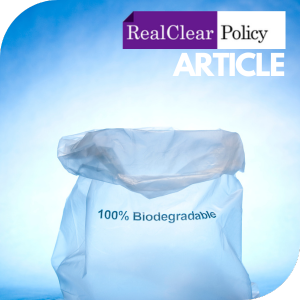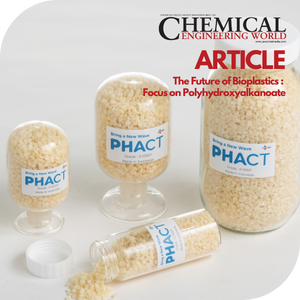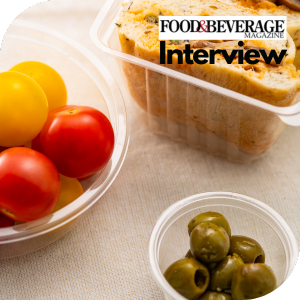21 January 2025 – The Trump administration and new Congress have a unique opportunity to help American farmers and maintain American technological leadership in a cutting-edge industry by supporting policies and regulations that expand the production and adoption of bioplastics in the U.S. This move is not just about environmental benefits; it is a strategic economic decision.
Bioplastics, or biopolymers, represent a wide range of materials made from biobased, or plant-based, feedstocks that have many of the same uses as traditional plastics. Some have the added advantage of breaking down if composted, avoiding the creation of persistent microplastics if they are littered. They can be used for many applications, from hygiene products and coffee pods to straws and potato chip bags, and even 3D printing filament.
The invention and commercialization of biopolymers is deeply rooted in American innovation. Early engineering to create significant amounts of PHA (polyhydroxyalkanoate) biopolymers was done at MIT in the 1990s, developing crucial technology needed to scale up production. Minnesota-based NatureWorks was the first company in the world to begin producing PLA (polylactic acid) biopolymers at commercial scale in 2002. Procter & Gamble spent more than a decade developing highly functional PHA technology. After 2007, that material became commercially produced by the company now called Danimer Scientific, located in Georgia and Kentucky. Today, PHA and PLA are the two most common biobased and compostable plastics produced globally. Manufacturing capacity around the world is expected to grow 44 percent over the next five years.
Unfortunately, similar growth in biopolymer manufacturing is not happening inside the U.S. Globally, the U.S. has been outpaced by countries that have prioritized industrial policy and economic investment supportive of biopolymer manufacturing and their use in downstream markets.
America can and should seek to lead again in this critical sector. The economic benefits are not limited to growth in the domestic biopolymer manufacturing market. They extend to long value chains beginning with farmers down through consumer products that rely on biopolymers and on to composters producing a highly in-demand soil additive.
Biopolymers benefit American farmers in three ways. First, biopolymers use plant-based feedstocks as a raw material for their manufacturing. U.S. farmers grow the corn, canola, soy, sugar beets and other crops that become bioplastics. Diversified, high-value downstream markets for agricultural crops enhances economic stability. Win No. 1 for American farmers.
Second, American farmers want to maintain and increase their overseas markets for fresh fruit, vegetable and specialty crop exports. Each year, food and agricultural exports support more than 1 million U.S. jobs and generate more than $200 billion in economic activity in rural areas and beyond. However, foreign regulations on plastics and packaging can bar export markets to American farmers.
For example, countries such as France require that the small stickers found on produce be compostable. If stickers on apples and other produce are made of compostable bioplastics, instead of traditional plastic, that keeps markets open for U.S. exports. Therefore, investing in the development of compostable, bioplastic packaging and packaging alternatives for food and agricultural exports that meets growing international packaging regulations should remain a priority of the USDA, which is eager to protect and expand export markets for U.S.-grown food. Win No. 2 for farmers.
Finally, when bioplastics reach the end of their purpose, they can be composted. A popular misconception of a composting facility is that it’s designed to process garbage or waste. Untrue. Composting facilities are manufacturers that turn organic material, such as food scraps, yard waste and even bioplastics into a valuable soil additive that can be sold to farmers to improve the soil health of their fields and, therefore, increase their crop yields. Win No. 3 for farmers, and economic growth for the composting industry.
Bioplastics are not only a suitable substitute for many traditional plastic products. In many cases, they are superior. Consider diapers.
Diapers made from bioplastics are better at managing moisture compared to those made of traditional materials, reducing the risk of diaper rash. Why? The top layer of a diaper made with a combination of PLA and PHA bioplastics – the part that touches a baby’s skin –moves moisture away from the skin and to the absorbent part of the diaper faster, which, as every parent knows, is the key to reducing diaper rash. Because the top layer is so efficient, the amount of absorbent material in the diaper can be reduced by up to 30 percent, potentially reducing both the thickness and the cost of the diaper.
If you’ve ever used a desktop-style 3D printer, you probably used a bioplastic like PLA. PLA is the most common filament used in desktop 3D printing because it’s easy for consumers to use, doesn’t warp, doesn’t smell bad like traditional plastics, and it creates highly detailed parts. It’s another example of how bioplastics have unique properties that create new or better products across a wide range of consumer goods.
Supporting regulations and economic incentives to expand America’s production and use of bioplastics is a strategic move that can create jobs and maintain U.S. leadership in the sector. By investing in this industry, the Trump administration and Washington policymakers can drive economic growth, foster innovation, and ensure a sustainable future for American manufacturing and the American farmer.
Leah Ford is Director of Marketing for CJ Biomaterials.





